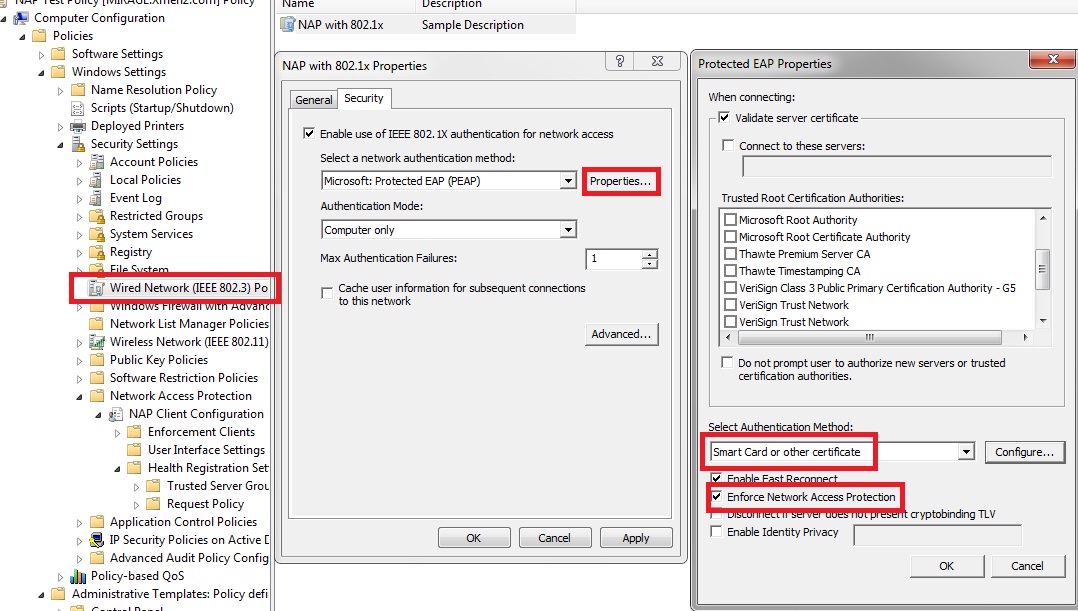
- Wired client how to#
- Wired client windows 10#
- Wired client windows 7#
iPSK (consolidate SSIDs into one – each client could have its own PSK).  PSK (too many SSIDs – one for each type of device). The clients are responsible for detecting server failure and then failing over. Group membership, Endpoint Profile, Posture, MDM compliance
PSK (too many SSIDs – one for each type of device). The clients are responsible for detecting server failure and then failing over. Group membership, Endpoint Profile, Posture, MDM compliance  Authentication – credentials, MAC address, certificates.
Authentication – credentials, MAC address, certificates. Wired client windows 10#
EAP-TEAP (Tunneled EAP) – uses EAP chaining ala Cisco An圜onnect NAM – Windows 10 (2004) – caveat: older Windows Server don’t support TEAP in Group Policy. ROPC (ISE 3.0) and Azure AD integration – EAP-TTLS. Windows Supplicants (Machine/User auth) and complexities that arise. Identity Sources: AD, LDAP, ODBC, Internal Users (internal to the RADIUS platform) – not all support MS-CHAPv2. EAP-PEAP, EAP-TLS, EAP-SIM – pros and cons of each Authenticating server (RADIUS) – Cisco ISE, Aruba Clearpass, Microsoft NPS, Juniper SBR (Steel-Belted RADIUS), Free RADIUS. Authenticator (Switch/WLC) – Most Enterprise Class Switches will have this. Wired client windows 7#
Supplicant (client) – Windows 7 and later, MACOS, iOS, Android, Linux, and many others. RADIUS is not secure – RADSec solution – TLS tunnel. EAP carried over Layer 3 using RADIUS (SP’s also use DIAMETER).  Uses the EAP framework (IETF) – defined in RFCs. IEEE standard – Layer 2 authentication method. Technical Explanation Of The 802.1X “Ingredients” Required 802.1X is too complicated – let’s just do MAB! We’ll discuss MAB later. Which CA should I use to sign the EAP certificate?. Server certificate and Client Certificates often mixed up – which one is used for what and when?. 802.1X requires client certificates (common misconception and reason to not implement 802.1X). Certificate based authentication is the gold standard (EAP-TLS).
Uses the EAP framework (IETF) – defined in RFCs. IEEE standard – Layer 2 authentication method. Technical Explanation Of The 802.1X “Ingredients” Required 802.1X is too complicated – let’s just do MAB! We’ll discuss MAB later. Which CA should I use to sign the EAP certificate?. Server certificate and Client Certificates often mixed up – which one is used for what and when?. 802.1X requires client certificates (common misconception and reason to not implement 802.1X). Certificate based authentication is the gold standard (EAP-TLS). Wired client how to#
Most customers don’t know what is in their environment and struggle to create an all-encompassing policy that describes WHAT is allowed to connect, and HOW to treat each device. Config consistency and Plug&Play simplicity (esp on Switch ports)Ĭommon NAT Hot Topics At The Start Of A Project:. Enabler for dynamic authorization – e.g. Visibility (what’s connecting to my network at any one time). 1 reason: Security Compliance (company mandate or even industry regulations – PCI/HIPAA etc) BTW: NAC can also mean Device Administration (TACACS+/RADIUS) but we are discussing end-client NAC today – in particular wired and wireless endpoints. 
Show Links:Ĩ02.1X Authentication Services Configuration Guide, Cisco IOS XE Release 3SE (Catalyst 3850 Switches) – CiscoĬisco ISE Secure Wired Access Prescriptive Deployment Guide – Cisco Show Outline: Why NAC? NS1 delivers DNS, DHCP, IPAM, and traffic steering as a service for your applications on premises and in the cloud. We’d love to hear from you and consider your topic. We also discuss reasons why NAC is worth deploying despite the effort.īy the way, maybe you’re an independent engineer with something you’d like to discuss on a future Heavy Networking podcast. We hit a bunch of topics including MAC authentication bypass, client certificates, EAP methods, and more. Arne’s a Senior Consulting Engineer and CCIE who emailed us asking to have this NAC conversation. And if you do allow them, what will they be able to access? If you’ve worked with 802.1X, Cisco ISE, Aruba ClearPass, RADIUS, etc., you’re in the world of NAC. Roughly stated, NAC is about whether to allow a wired or wireless “thing” (a user, a device) onto your network. Network Admission Control (also called Network Access Control), or NAC, is our topic today.








 0 kommentar(er)
0 kommentar(er)
